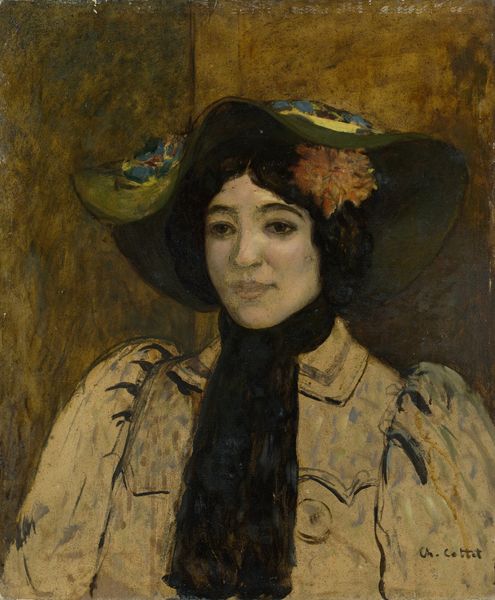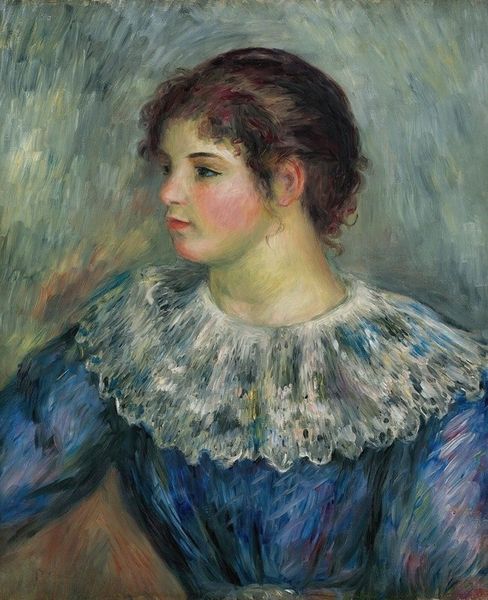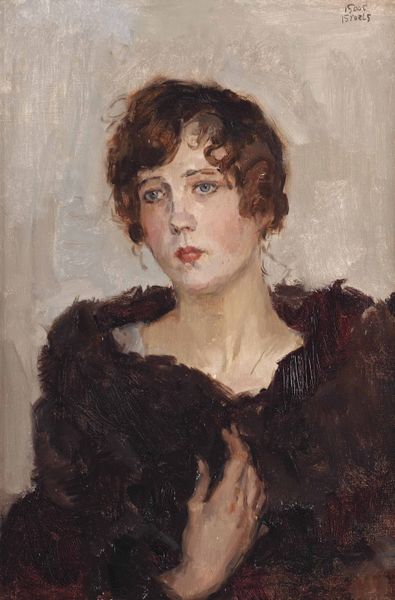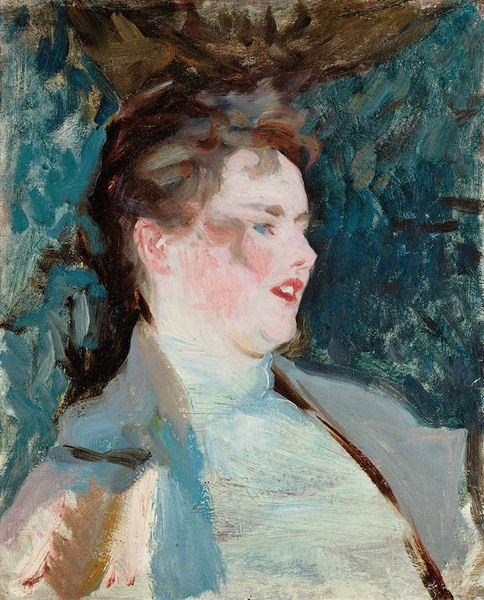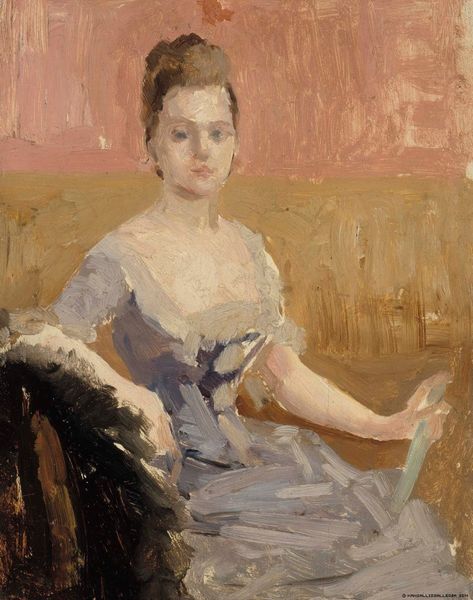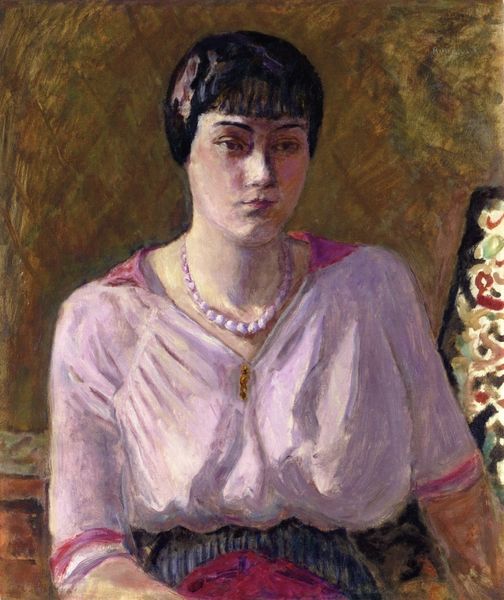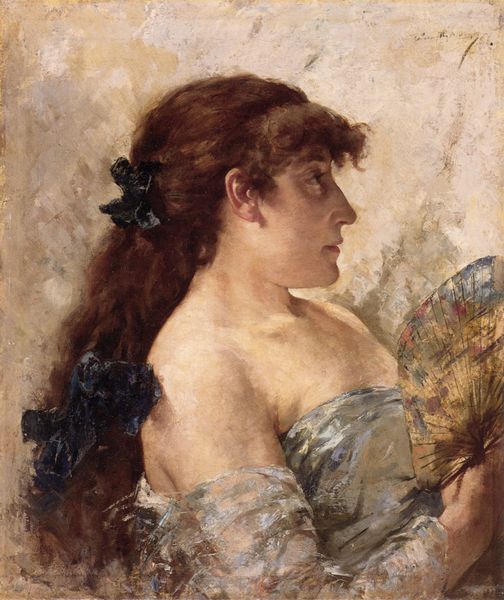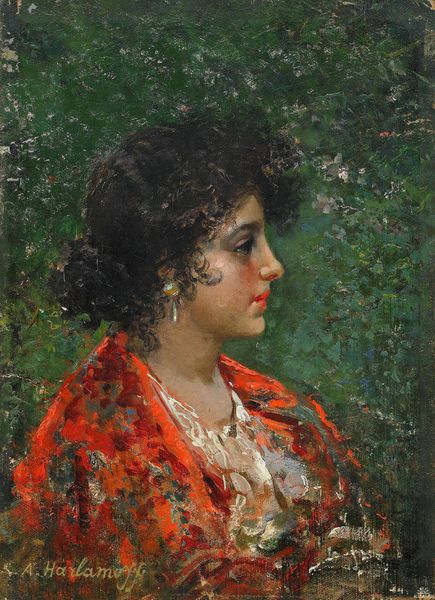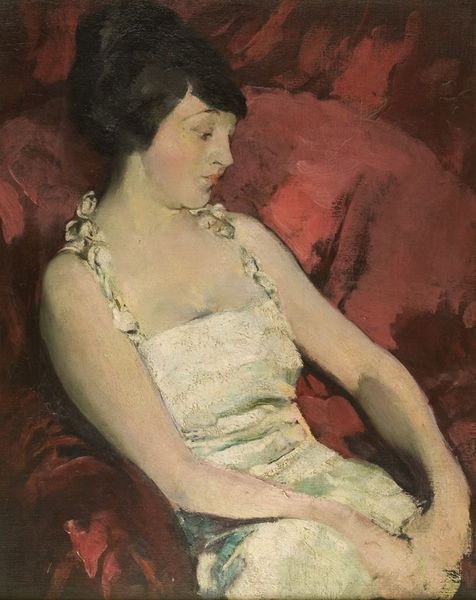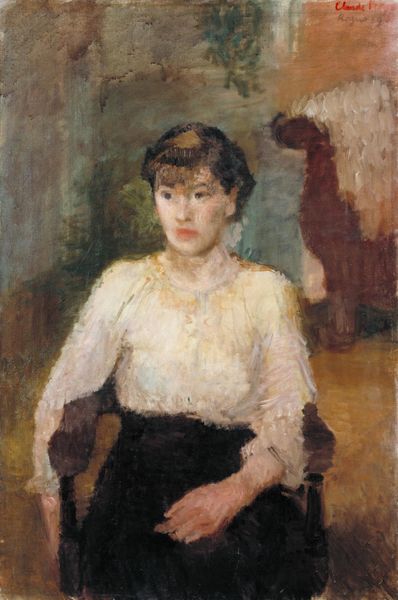
Copyright: Public Domain: Artvee
Editor: So, here we have Carolus-Duran’s "Spanish Woman," painted in 1876. The oil paint is built up in visible strokes – impasto, I believe? She appears elegant, poised… almost melancholy. What strikes you most about this portrait? Curator: The eyes. They gaze just past us, unfocused, perhaps lost in thought. The artist masterfully uses a limited palette - mostly dark reds and blacks - to draw our attention to her face, to that subtle expression. It whispers of secrets. What do you imagine she's contemplating? Perhaps a lost love, or a dance from a past era? Editor: I hadn't considered that. I was thinking more about societal expectations. You know, a woman’s role...that sort of thing. Curator: Intriguing! That deep red backdrop almost feels like a velvet curtain on a stage. But this isn't theatrical; it's intimate, almost private. Do you sense any connection to Spanish Romanticism with its interest in emotion and individuality? I would say so! The roses also provide a fascinating feminine symbol; a visual association to her personality. Editor: Yes, I can definitely see that Romantic influence now, and the roses adds another layer! Thinking about the 'Spanish Woman' of it all...was Duran engaging with the culture authentically? Curator: That’s a worthwhile question. I suspect that by embracing those so called 'Spanish' elements, Duran, a Frenchman, sought an aesthetic language beyond his typical portraiture to delve into the subjective. Editor: Well, I'll certainly think about her secrets, and the performance of it all, now when I look at the painting again! Curator: Indeed! It is amazing how each viewing unveils more layers. A small voyage of discovery, isn't it?
Comments
No comments
Be the first to comment and join the conversation on the ultimate creative platform.
